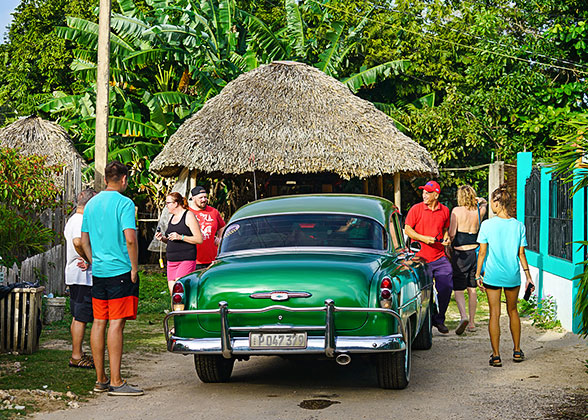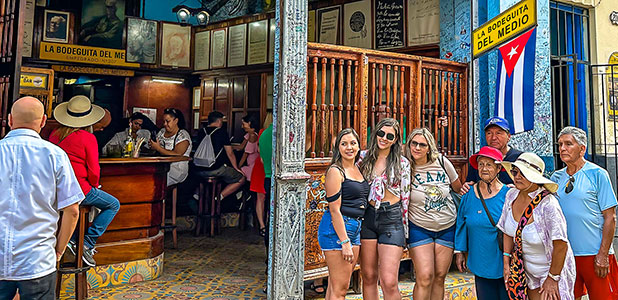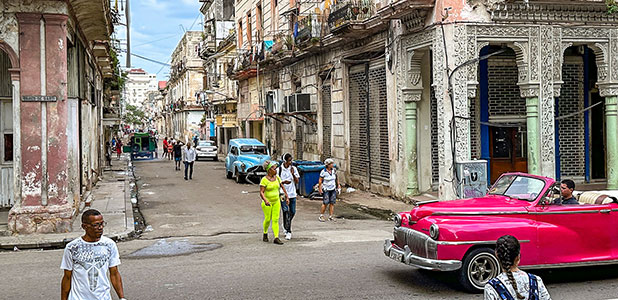Cuba Weather

Visit Plaza Vieja in Havana
|
![]() Climatic Features: Located in the tropical zone, Cuba has no significant temperature variations and it is warm all year round. But the precipitation varies a lot, leading to obvious dry and rainy seasons.
Climatic Features: Located in the tropical zone, Cuba has no significant temperature variations and it is warm all year round. But the precipitation varies a lot, leading to obvious dry and rainy seasons.
![]() Average Temperature: 21-27°C (69.8°F-80.6°F)
Average Temperature: 21-27°C (69.8°F-80.6°F)
![]() Warmest Month: August: 22-31°C (71.6°F-87.8°F)
Warmest Month: August: 22-31°C (71.6°F-87.8°F)
![]() Coolest Month: January: 19-26°C (66.2°F-78.8°F)
Coolest Month: January: 19-26°C (66.2°F-78.8°F)
![]() Rainiest Month: June: 182 mm of rainfall
Rainiest Month: June: 182 mm of rainfall
![]() Driest Month: March: 46 mm of rainfall
Driest Month: March: 46 mm of rainfall
![]() What is the weather like in Cuba?
What is the weather like in Cuba?
Cuba is an island country in the northwestern Caribbean, with no significant variation in climate from region to region. Most areas have a tropical rainforest climate, while only the leeward slopes of the southwestern coast have a tropical savanna climate. The average annual precipitation is generally more than 1,000 mm and the relative humidity is about 81%. It rains less in the south, where there are mountains, and more on the north-facing slopes. On the whole, the weather in Cuba can be generalized as warm and humid.
![]() Best Time to Visit: December to April
Best Time to Visit: December to April
If you plan to travel to Cuba in 2025, then read our Best Private Cuba Tours 2025 & 2026 to get more useful guide.
Clothes to Wear: sweatshirts, jackets, raincoats, light sweaters, sneakers
Clothes to Wear: tank tops, shirts, shorts, thin skirts, loose jeans, raingear
Dry Season in Cuba
Cuba weather during the dry season is good for travelling, especially from early December to late March. During this period, the temperature is generally warm and the rainfall is fairly low, that is, the air here is pleasant. Genial sunshine and calm waters make it just the right time for people to enjoy the beach time and other outdoor activities.Rainy Season in Cuba
In rainy season, Cuba experiences heavy rain very frequently. But it usually does not last long and one can continue the tour very after. The thing is it is not comfortable to travel outdoor with high temperature and high humidity. Thus, it is not very recommended to visit Cuba at this time. However, if you don’t mind it, you can take in some amazing natural scenery as the abundance of rain makes the tropical rainforests lusher and more vibrant.
![]() Hurricane Season: Hurricanes may occur in Cuba during the period from June to November, most likely from August to October in the southern coast. If it hits, one has to stay indoors and cannot go out to have fun. So check the weather forecast ahead of time, and avoid going there if hurricane lands.
Hurricane Season: Hurricanes may occur in Cuba during the period from June to November, most likely from August to October in the southern coast. If it hits, one has to stay indoors and cannot go out to have fun. So check the weather forecast ahead of time, and avoid going there if hurricane lands.
Regional Weather in Cuba
Northwestern Cuba
![]() Major destinations: Havana, Pinar del Río, Matanzas, Isla de la Juventud, Cienfuegos, Sancti Spíritus, Villa Clara
Major destinations: Havana, Pinar del Río, Matanzas, Isla de la Juventud, Cienfuegos, Sancti Spíritus, Villa Clara
![]() Weather review: The weather in Northwestern Cuba is cooler than the rest regions of the island all year round. Sometimes, the sudden and brief cool air from America leads to windier and rainier weather.
Weather review: The weather in Northwestern Cuba is cooler than the rest regions of the island all year round. Sometimes, the sudden and brief cool air from America leads to windier and rainier weather.
|
|
|
Southeastern Cuba
![]() Major destinations: Guantánamo, Santiago de Cuba, Holguín, Las Tunas, Granma, Camagüey
Major destinations: Guantánamo, Santiago de Cuba, Holguín, Las Tunas, Granma, Camagüey
![]() Weather review: All regions of southeastern Cuba have a tropical rainforest climate, with high temperatures and frequent rainfall throughout the year. Temperature in southern coast drops to around 16℃ (60.8℉) from December to March, but is above average in the northwest.
Weather review: All regions of southeastern Cuba have a tropical rainforest climate, with high temperatures and frequent rainfall throughout the year. Temperature in southern coast drops to around 16℃ (60.8℉) from December to March, but is above average in the northwest.






